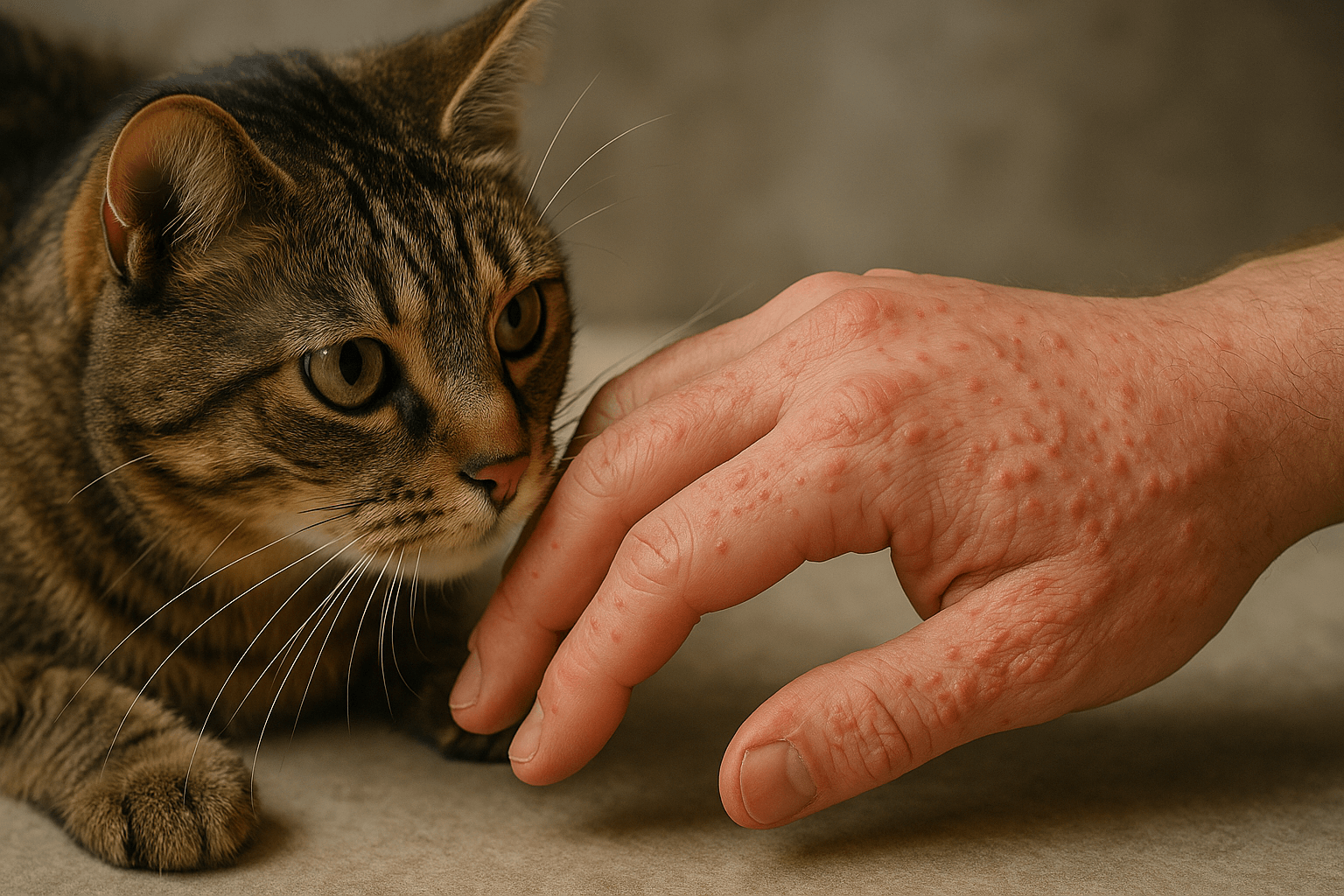Understanding Osteosarcoma in Cats: A Guide for Pet Owners
Osteosarcoma, a type of bone cancer, is a rare but serious condition that can affect cats. While it’s less common in felines than in dogs, osteosarcoma in cats is aggressive and often requires prompt attention to ensure the best possible outcome for your furry companion. This form of cancer typically affects the bones, leading to pain, swelling, and mobility issues. Early detection and proper management are crucial for improving your cat’s quality of life. In this blog post, we’ll explore what osteosarcoma is, its symptoms, treatment options, and how you can support your cat through this challenging diagnosis. Let’s dive into the details to empower you with the knowledge you need to care for your feline friend.
Common Symptoms of Osteosarcoma in Cats
Recognizing the signs of osteosarcoma early can make a significant difference in your cat’s prognosis. Since cats are masters at hiding discomfort, it’s important to be vigilant about changes in their behavior or physical condition. Here are some common symptoms to watch for:
Limping or Lameness
Cats may develop a noticeable limp or difficulty walking due to pain or weakness in the affected bone.Swelling or Lumps
A visible lump or swelling around the affected area, such as a leg or jawbone, may indicate a tumor.Pain When Touched
Your cat may react negatively when you touch certain areas, signaling discomfort or tenderness.Loss of Appetite
A sudden decrease in appetite can be a sign of pain or illness caused by osteosarcoma.Behavioral Changes
Increased irritability, lethargy, or reluctance to engage in usual activities may suggest your cat is unwell.
If you notice any of these symptoms, it’s essential to consult your veterinarian promptly. Early diagnosis can lead to more effective treatment options and a better quality of life for your cat.
Treatment Options for Osteosarcoma in Cats
While osteosarcoma in cats is challenging to treat, there are several options available to manage the condition and improve your cat’s comfort. The chosen treatment will depend on factors like the location of the tumor, the stage of the cancer, and your cat’s overall health. Here are some common approaches:
Surgical Removal
In some cases, amputation or surgical removal of the affected bone may be recommended to eliminate the tumor.Radiation Therapy
Radiation can help shrink tumors and alleviate pain, especially when surgery isn’t an option.Chemotherapy
While less common in cats, chemotherapy may be used to target cancer cells that have spread beyond the primary tumor.Pain Management
Medications such as anti-inflammatory drugs or opioids can help manage pain and improve your cat’s quality of life.Palliative Care
For advanced cases, palliative care focuses on keeping your cat comfortable and maintaining their dignity.
Each treatment option has its benefits and limitations, so it’s important to discuss them thoroughly with your veterinarian. Together, you can create a plan that prioritizes your cat’s well-being.
Check this guide 👉Understanding Aspergillosis in Cats: Best 7 Health Tips!
Check this guide 👉Understanding Cryptococcus in Cats: Best 7 Health Tips!
Check this guide 👉Understanding Lick Granuloma in Cats: Best 7 Expert Tips!

Symptoms of Osteosarcoma in Cats | Treatment Options for Osteosarcoma |
|---|---|
Limping or lameness | Surgical removal of the tumor |
Swelling or lumps | Radiation therapy |
Pain when touched | Chemotherapy |
Loss of appetite | Pain management medications |
Behavioral changes | Palliative care |
How to Support Your Cat During Treatment
Supporting your cat through osteosarcoma treatment requires patience, love, and practical steps to ensure their comfort. Here are some ways you can help your feline friend during this difficult time:
Create a Comfortable Environment
Provide soft bedding and easy access to food, water, and litter boxes to minimize strain on your cat.Monitor Their Pain Levels
Keep track of your cat’s behavior and report any changes in pain or discomfort to your vet.Offer Nutritious Meals
Encourage your cat to eat by offering high-quality, palatable food that meets their nutritional needs.Limit Physical Activity
Restrict jumping or running to prevent further injury to the affected bone.Stay Positive and Calm
Your emotional state can influence your cat’s mood—staying calm and supportive can help them feel more at ease.
By focusing on your cat’s physical and emotional needs, you can make their journey through treatment as smooth and comfortable as possible. Your care and dedication mean the world to them.
Preventive Measures and Early Detection Tips
While osteosarcoma cannot always be prevented, there are steps you can take to reduce risks and catch potential issues early. Regular monitoring and proactive care can make a significant difference in your cat’s health. Here’s what you can do:
Schedule Routine Vet Check-Ups
Regular veterinary exams can help detect abnormalities before they become severe.Observe Changes in Mobility
Pay attention to any signs of limping, stiffness, or reluctance to move, which could indicate bone issues.Maintain a Healthy Weight
Excess weight can put additional stress on bones and joints, increasing the risk of complications.Provide a Safe Environment
Minimize the risk of injuries by removing hazards like sharp objects or unstable furniture.Act Quickly on Warning Signs
If you notice anything unusual, seek veterinary advice immediately to rule out serious conditions.
Taking these preventive measures can help protect your cat from osteosarcoma and other health issues. Early action is key to ensuring your feline companion stays happy and healthy.
Common Misconceptions About Osteosarcoma in Cats
There are several misconceptions about osteosarcoma in cats that can lead to confusion or misinformation. Clearing up these myths can help cat owners make informed decisions about their pet’s care. Here are some common misconceptions and the truth behind them:
Myth: Osteosarcoma is always fatal.
While osteosarcoma is aggressive, early detection and treatment can significantly improve outcomes and extend your cat’s life.Myth: Only older cats develop osteosarcoma.
Although it’s more common in older cats, younger cats can also be affected, especially if there’s a history of trauma or genetic predisposition.Myth: Surgery is the only treatment option.
While surgery is often recommended, radiation therapy, chemotherapy, and pain management can also play vital roles in treatment.Myth: Osteosarcoma is the same in cats as in dogs.
Cats tend to have a different presentation and progression of the disease compared to dogs, requiring tailored approaches.Myth: There’s nothing you can do to prevent osteosarcoma.
While prevention isn’t guaranteed, maintaining a safe environment and monitoring your cat’s health can reduce risks.
By understanding the facts, you can approach osteosarcoma with clarity and confidence. Knowledge empowers you to provide the best possible care for your cat.
Emotional Challenges of Caring for a Cat with Osteosarcoma
Caring for a cat diagnosed with osteosarcoma can take an emotional toll on pet owners. It’s important to acknowledge these challenges and find ways to cope while supporting your feline friend. Here are some emotional hurdles you might face:
Feelings of Helplessness
Watching your cat suffer can leave you feeling powerless, but focusing on actionable steps like treatments and comfort measures can help.Financial Stress
The cost of treatments like surgery or radiation can be overwhelming, so exploring payment plans or financial assistance programs may ease the burden.Grief and Anxiety
Facing the possibility of losing your cat can trigger anticipatory grief, making it essential to seek emotional support when needed.Balancing Hope and Realism
It’s important to remain hopeful while also preparing for all possible outcomes, ensuring your cat’s comfort remains the priority.Isolation from Others
Friends or family may not fully understand what you’re going through, so connecting with pet loss support groups can provide comfort.
Recognizing these emotional challenges allows you to address them constructively. Remember, your love and dedication are invaluable to your cat during this time.
Fun Facts About Feline Bone Health
Understanding feline bone health can provide insight into conditions like osteosarcoma and highlight the importance of caring for your cat’s skeletal system. Here are some interesting facts about cats and their bones:
Cats Have Around 230 Bones
This is more than humans, giving them incredible flexibility and agility.Bones Are Lightweight Yet Strong
A cat’s bones are designed to absorb impact, allowing them to leap and land gracefully.Bone Density Decreases with Age
Older cats may experience reduced bone density, increasing the risk of fractures or injuries.Nutrition Plays a Key Role
A diet rich in calcium and phosphorus supports strong bones and overall skeletal health.Exercise Strengthens Bones
Regular movement helps maintain bone density and joint flexibility, reducing the risk of bone-related issues.
These fun facts underscore the importance of maintaining your cat’s bone health throughout their life. By providing proper nutrition, exercise, and veterinary care, you can help keep their skeleton strong and resilient.
Frequently Asked Questions About Osteosarcoma in Cats
Is osteosarcoma common in cats?
No, osteosarcoma is relatively rare in cats compared to dogs, but it is highly aggressive when it occurs.
Can osteosarcoma in cats be cured?
While a complete cure is rare, treatments like surgery and radiation can help manage the condition and extend your cat’s life.
What causes osteosarcoma in cats?
The exact cause is unknown, but factors like genetics, trauma, or abnormal bone growth may contribute to its development.
How long can a cat live with osteosarcoma?
Prognosis varies depending on the treatment and stage of the cancer, but early intervention can improve survival times.
Are certain cat breeds more prone to osteosarcoma?
While no specific breed is strongly associated with osteosarcoma, larger or heavier cats may face a slightly higher risk.
Standing By Your Feline Friend Through Osteosarcoma
Dealing with a diagnosis of osteosarcoma in your cat can be emotionally challenging, but remember that you’re not alone. With the right care, treatment, and support, you can help your feline companion navigate this difficult journey with grace and dignity. From recognizing the symptoms early to exploring treatment options and providing a loving environment, every step you take makes a difference. Above all, cherish the moments you share with your cat and celebrate their resilience. Together, you can face osteosarcoma with strength and compassion, ensuring your beloved pet feels loved and supported every step of the way.
Canned Pumpkin for Cat Diarrhea: Best 7 Expert Tips! Natural remedy to firm stools, soothe upset bellies, and support gut health safely.
Can a Cat Give You Scabies? Best 7 Expert Tips! Discover the truth about feline mites, human skin risks, and how to protect yourself—without panic.
Cat Flea vs Human Flea: Best 7 Expert Tips! Discover the truth about bites, species, and how to eliminate infestations for good.
Weird Cat Behaviors: Best 7 Expert Tips! Discover why cats do strange things—and how to understand, not punish, their instincts for a happier home.





